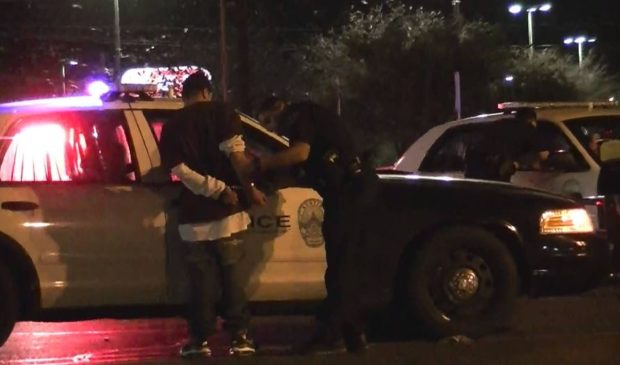Austin police short-staffed and underprotected, advocates say
Tuesday, August 2, 2016 by
Cate Malek In the aftermath of two shootings in Austin last weekend, City Council should increase police numbers as well as invest in better body armor, advocates say.
Those shootings, along with a fierce national debate over the role police should be playing in communities, gave added gravity to a discussion over Austin’s shortage of police officers and equipment at a Public Safety Commission meeting on Monday. The commission voted unanimously to recommend that Council increase the number of officers and invest in improved body armor.
The meeting focused on the results of a Greater Austin Crime Commission study that concluded that the Austin police force is too short-staffed to put adequate time into community engagement. Kenneth Casaday, president of the Austin Police Association, also went on record to say that the body armor currently worn by police officers in Austin and elsewhere is not sufficient to protect against rifle fire, a fact that was born out by recent shooting deaths of police officers in Baton Rouge.
“If we keep going this way, it’s going to be just like our transportation. The cost to keep up will be so great we can’t afford it,” said David Roche from the Greater Austin Crime Commission.
The recommendation was sparked by the upcoming city budget negotiations in August. Although Police Chief Art Acevedo requested 111 officers, the preliminary budget includes only an increase of 33 officers. But commissioners noted that public safety already takes up the large majority of the city budget and has for years. For the upcoming year, budget writers anticipate that public safety will make up 71.5 percent of general fund expenditures, with community services accounting for 20.7 percent.
Still, police advocates worry that Austin’s current force is running from emergency to emergency instead of proactively reaching out to communities.
“Back when I was on patrol 15 years ago, you had time to get out and talk to the business owners and community members,” Casaday told the Austin Monitor. “Now, from the time you get to work to the time you get home, you’re answering 911 calls all day.”
At an earlier budget meeting on June 2, Acevedo painted a more optimistic picture of the Austin police force’s relationship with the community. Acevedo told Council that 73 percent of Austinites surveyed in 2015 were satisfied with the general quality of police services, compared to a national average of 60 percent satisfaction.
Community engagement is a key factor in reducing tensions between police officers and the community, according to Michael Lauderdale, a criminal justice professor at the University of Texas at Austin. Officers on patrol should have time to go to playgrounds, churches and local businesses and meet the people they’re working with, he said.
“This permits the officer to know the community, its members and concerns, and build a sense of safety,” he said. “It means the police force is not a standing army but an expression of the community itself.”
The recommended percentage of time for police officers to be spending on community engagement is around 35 percent, Lauderdale said, although he added that it’s an inexact science. Austin police officers are currently spending around 17 percent of their time on community engagement, down from 33 percent in 2009.
Another subject of strong interest at the meeting was body armor for Austin’s police force. Casaday said the bulletproof vests that Austin police wear clearly say that they won’t stand up to rifle fire, a fact that police officers around the nation had been reluctant to make public before.
“It hasn’t been discussed in public, and the fact is the vests that police officers wear around the country are just not adequate for an active shooter situation with rifles,” Casaday said. He said that members of his union are asking for secondary vests that could be worn during active shooter situations as well as for bulletproof doors for their police vehicles.
At the meeting, Casaday expressed frustration with the city’s willingness to fund studies on how many police officers Austin needs but unwillingness to fund more police officers. Council spent $200,000 in March to hire a private consulting firm to study how Austin could do a better job of community policing. The results of that study should be released in the next few weeks.
“Please tell me how many more studies we have to do before we take action,” Casaday said.
Video still courtesy of YouTube. The Austin Monitor’s work is made possible by donations from the community. Though our reporting covers donors from time to time, we are careful to keep business and editorial efforts separate while maintaining transparency. A complete list of donors is available here, and our code of ethics is explained here.
You're a community leader
And we’re honored you look to us for serious, in-depth news. You know a strong community needs local and dedicated watchdog reporting. We’re here for you and that won’t change. Now will you take the powerful next step and support our nonprofit news organization?









